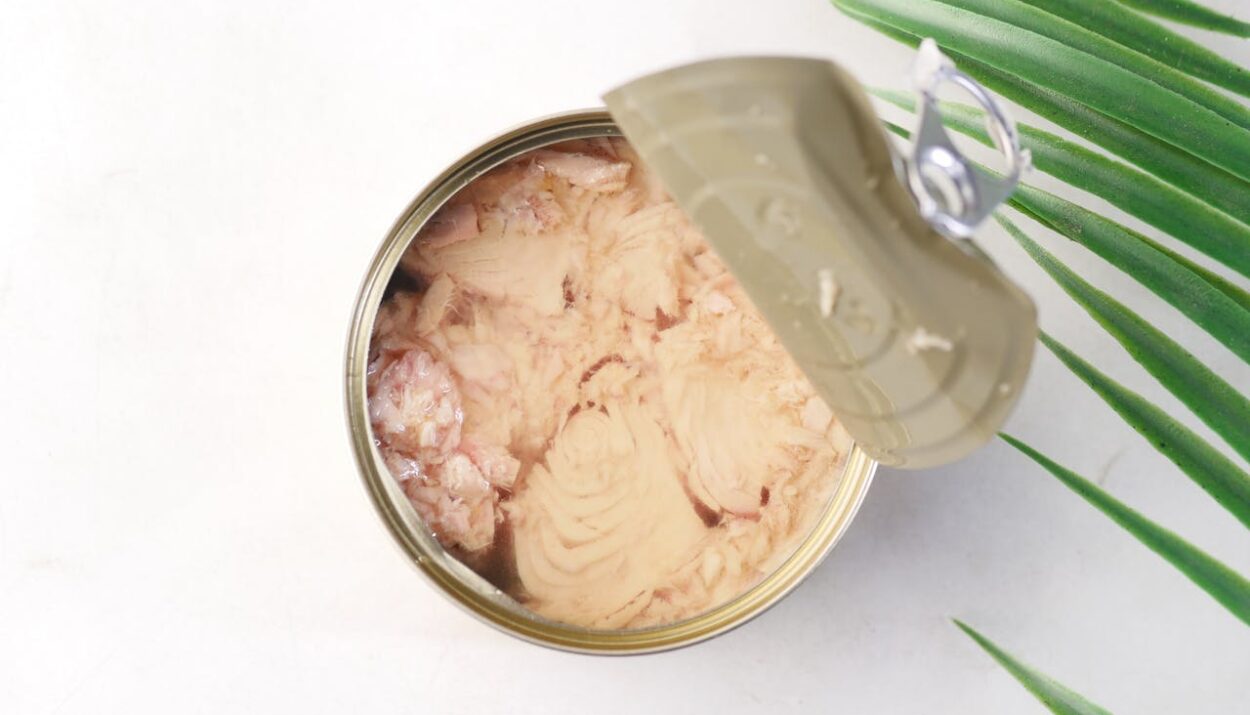In this article, we explore the tantalizing world of tuna consumption to find the answer to “How much canned tuna is safe to eat per week?” Seeking a balance between its health benefits and the dangers of mercury, we unveil the secrets to making the best dietary choices. Whether you’re a health-conscious parent, a seafood enthusiast, or simply someone curious about the best seafood options, this article is your compass in the vast ocean of nutrition.
Learn how much canned tuna is safe to eat per week, ensuring your meals are delicious and health-conscious. Embark on a culinary adventure armed with knowledge.
In this article:
- How much canned tuna is safe to eat per week – Tuna consumption guidelines
- The health benefits of canned tuna
- How much canned tuna is safe to eat per week – Mercury levels
- How much canned tuna is safe to eat per week – Considerations for pregnancy and children
- Tuna alternatives and seafood variety
HOW MUCH CANNED TUNA IS SAFE TO EAT PER WEEK – TUNA CONSUMPTION GUIDELINES
Navigating the world of canned tuna can be tricky, especially when considering your health and well-being. Understanding the safe limits of consumption is vital. For the average adult, health experts recommend a weekly intake of at least 8 ounces of seafood, which includes various types of fish and shellfish. This guideline ensures you receive the essential nutrients found in seafood without overexposing yourself to potential risks.
However, tailoring your tuna consumption is crucial if you fall into specific categories, such as pregnancy, breastfeeding, or having a child. Specialized recommendations exist to safeguard the health of these vulnerable groups. By adhering to guidelines, you can enjoy the benefits of tuna while minimizing any potential risks associated with mercury exposure. It’s not just about enjoying a tasty meal; it’s about making informed choices that prioritize your and the well-being of your loved ones.
So, whether preparing a quick tuna salad or incorporating tuna into your family meals, understanding these guidelines ensures you can savor the tuna flavors safely and responsibly.
THE HEALTH BENEFITS OF CANNED TUNA
Beyond its delightful taste, canned tuna is a nutritional powerhouse that can significantly enhance your overall well-being. Rich in essential nutrients, it offers a host of health benefits. Firstly, canned tuna is an excellent source of high-quality protein, vital for building and repairing tissues in your body. It primarily benefits individuals leading active lifestyles or those seeking muscle health.
Moreover, canned tuna contains omega-3 fatty acids, often called “good fats.” These beneficial fats are essential for heart health, decreasing the likelihood of heart-related conditions and supporting optimal brain function. Omega-3s are also known for their anti-inflammatory properties, preventing chronic diseases and supporting joint health.
Additionally, canned tuna contains vitamins and minerals, such as vitamin D, essential for strong bones and a robust immune system. It also provides essential minerals like selenium, known for its antioxidant properties, safeguarding your cells from damage.
Also, if you are wondering what foods help boost mood, tuna and other fatty fish are among the best choices.
By adding canned tuna to your meals, you not only satisfy your taste buds but also provide your body with essential nutrients. The health benefits of canned tuna make it a smart and delicious choice for maintaining your overall health and vitality.
HOW MUCH CANNED TUNA IS SAFE TO EAT PER WEEK – MERCURY LEVELS
Mercury, a natural element in fish, can be excessively harmful when accumulated in the human body over time. Prolonged exposure to high levels of mercury may cause poisoning and severe health issues. Therefore, being well-informed about the mercury levels in different seafood options is essential to protect long-term health.
For most adults, experts recommend consuming canned tuna in moderation, typically up to 8 to 12 ounces (equivalent to 2 standard cans) per week.
Choosing the correct type of tuna is equally crucial. Canned light tuna, like skipjack tuna, usually contains lower mercury levels than albacore tuna. Skipjack tuna is often considered a safer option.
By understanding how much canned tuna is safe to eat per week and being mindful of the quantity and type you consume, you can enjoy its nutritional benefits while minimizing the potential risks of mercury exposure.
HOW MUCH CANNED TUNA IS SAFE TO EAT PER WEEK – CONSIDERATIONS FOR PREGNANCY AND CHILDREN
Special attention is crucial for pregnant women, breastfeeding mothers, and children regarding canned tuna consumption. The guidelines differ significantly for these vulnerable groups. So, how much canned tuna is safe to eat per week for pregnant women and children?
Pregnant women and breastfeeding mothers should consume between 8 and 12 ounces of various fish per week. Mercury, found naturally in fish, can be harmful, especially during the early stages of development. Choosing canned light tuna, such as skipjack tuna, is generally a safer choice as it contains lower levels of mercury.
Children should limit their tuna intake and consume smaller portion sizes. A recommended serving size is about 1 ounce for children aged 1-3 years, 2 ounces for ages 4-7 years, 3 ounces for ages 8-10 years, and 4 ounces for children ages 11 years and older.
TUNA ALTERNATIVES AND SEAFOOD VARIETY
Here’s a list of seafood alternatives to canned tuna that you can consider adding to your meals for variety and nutritional benefits:
- Salmon: With its omega-3 fatty acids, salmon is flavorful and offers numerous health benefits, including heart and brain health.
- Shrimp: Shrimp, a versatile seafood option, offers a low-calorie and high-protein choice to grill, boil, or sauté for various dishes.
- Trout: A freshwater fish with a mild, delicate flavor, trout is a good source of lean protein and essential nutrients like vitamin D.
- Mackerel: People often enjoy mackerel grilled or smoked for its distinctive taste, as it is a fatty fish that provides omega-3 fatty acids.
- Sardines: Sardines, small but nutrient-dense fish, are rich in omega-3s, calcium, and vitamin D, making them a delightful addition to toast or salads.
- Crab: Crab meat is sweet and tender, offering a source of protein and essential minerals like zinc and selenium.
- Lobster: Lobster is a luxurious seafood choice known for its rich, succulent meat. It’s a good source of protein and low in fat.
- Scallops: Scallops offer a delicate, sweet flavor while being low in calories but high in protein. You can grill, sauté, or use them in pasta dishes.
- Tilapia: Tilapia is a mild-flavored, white fish that is easy to cook and a good source of protein.
- Catfish: Catfish has a slightly sweet taste and is rich in lean protein, making it a popular choice for frying or grilling.
Including these seafood alternatives in your diet provides diverse flavors and ensures you get nutrients essential for your overall well-being.
_____
Understanding “how much canned tuna is safe to eat per week” is vital for maintaining a healthy and balanced diet. Be aware of mercury levels and choose the suitable types of tuna to savor this delicious seafood while prioritizing your well-being.










